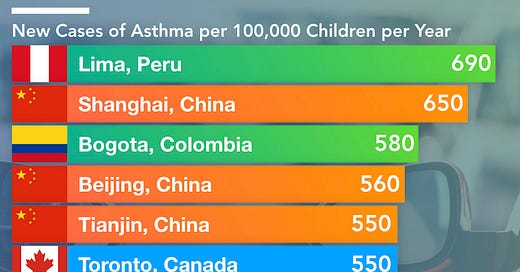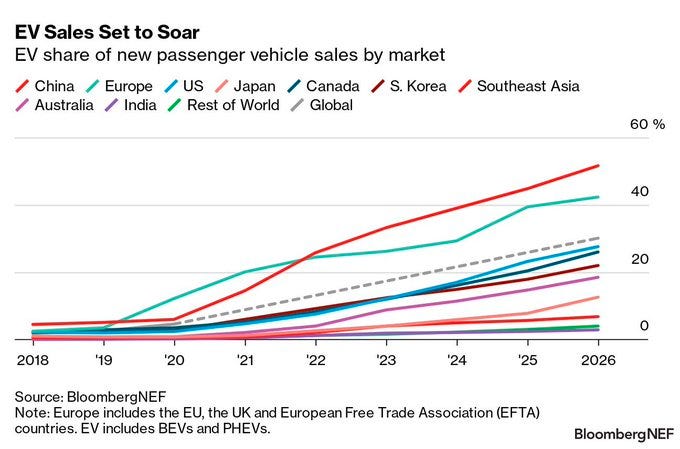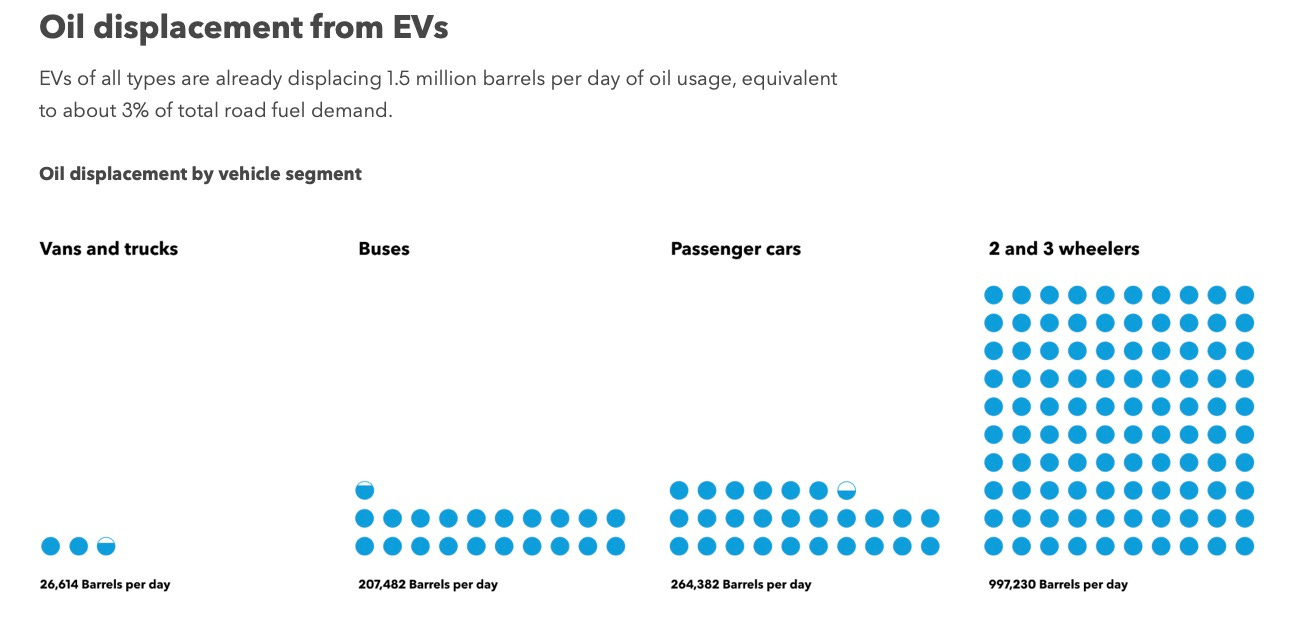EV Myths and Pollution-Free Mobility
Welcome to Need to Know: Science & Insight, my personal newsletter that looks at what we Need-to-Know at this time of pandemic, climate emergency and unraveling of nature’s life supportsElectric vehicles (EVs) make up 15% of all new car sales in Europe. Tesla’s Y model is Europe’s best-selling car of any kind. In the U.S. sales are up 50% this year with at least 1 million EVs expected to be sold. In Canada, EVs represent 9% of new car sales.
That said, EVs still cost more than their polluting counterparts. Price parity should only be a year or two away. EVs have less than half the parts needed to build a gas-powered polluter and are simpler to manufacture.
Ah, but whatabout EV batteries, lithium, mining, lifecycle emissions, range, charging…???
I get lots of “whatabout” objections when it comes to EVs. A recent example:
“EVs are heavier and will ruin the roads/bridges.”
EVs are in fact a few hundred pounds/kilos heavier due to the battery. However, the average weight of gas-powered polluting vehicles in the US increased by nearly 1000 pounds in the last 30 years because of SUVs and pick-up trucks. No one complained about that weight gain.
Of course few people really need such huge vehicles which is a legit objection.
Need-to-Know: EVs are only part of the solution to pollution-free mobility.
EVs shouldn’t be the first choice for pollution-free mobility. Electric buses/trains/trams along with walking, bikes, E-bikes, E-scooters, etc should come first.
However, most cities/regions and Western society as a whole were built around the car. So for many an EV is the easiest first step to non-polluting mobility.
To that end, here’s a debunking of some of the EV myths you’ve no doubt come across.
Need-to-Know: Gas cars are 65X more likely to catch fire than an EV.
For one thing, EVs do not have a big tank of explosive fuel under the back seat. Also, batteries don’t burn easily unlike gasoline. And, after 20 years of EV development, any fire issues have been minimized according to a study by an auto insurance company.
Need-to-Know: EV batteries are being recycled.
A number of companies are already reusing or recycling EV batteries. After 160,000 kilometers they still retain at least 90% of their original range. Many do so even after 250,000 kms. Mandatory recycling targets, like the EU has, would help build the market.
Need-to-Know: EV batteries don’t require cobalt anymore
New batteries already on the market don’t use cobalt, nickel, or manganese. These are cheaper to make as they use common elements. Batteries are also using less and less lithium.
Game-changing solid-state batteries that recharge super-fast, are far smaller yet pack more energy are starting to become available.
Need-to-Know: The electrical grid needs EV batteries for power storage
Electrical power systems need temporary power sources to meet peak demands. Normally these peaker-power plants use natural gas or diesel to boost the electricity supply for a couple of hours. Most of the time these expensive power plants are idle.
Cars and trucks are parked 95% of the time. If those vehicles are plugged into the grid, then the grid could use them to meet peak-power demands. In return, EV owners could get cheap off-peak charging. Win-Win.
Need-to-Know: EVs are far cheaper to own
Hyundai Kona, Canada’s second best-selling EV in 2021, is $17,800 cheaper to own than the gas-powered Kona. The electric Chevrolet Bolt is $22,000 cheaper to own and operate than the comparable gas-powered Toyota Corolla, based on a study by Clean Energy Canada.
There are other EV myths bouncing around. Any type of change brings objections. When it comes to EVs and renewables there is an enormous oil industry fueling those objections to delay the necessary and inevitable shift to pollution-free mobility.
If you are wondering about any other EV myths let me know.
Until next time, be safe.
Stephen
P.S. Info source for much of this issue was Clean Energy Canada, Simon Fraser University.)







